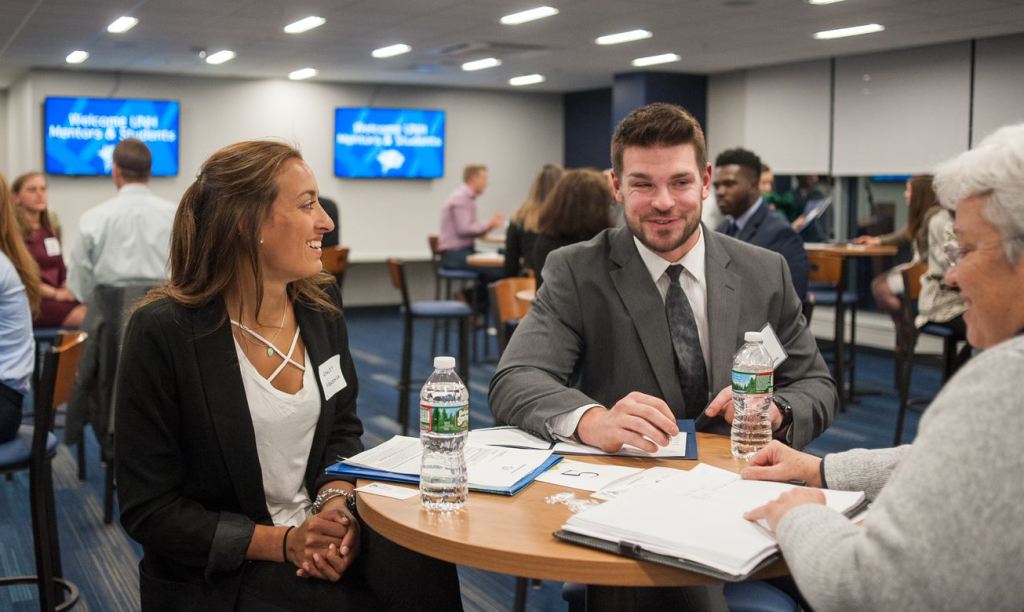Building Your Professional Network: Why Student-Athletes Should Prioritize LinkedIn While Balancing School and Sports

As a student-athlete, your days are often packed with training sessions, practice, travel, and coursework. It’s easy to get caught up in the immediate demands of balancing sports and academics, but one crucial aspect of your future career often gets pushed to the backburner: building your professional network.
While excelling in your sport is undoubtedly a priority, it’s essential to start developing your professional network even as you return to school and athletics. LinkedIn, a platform designed to connect professionals across various industries, is one of the most effective tools available to student-athletes looking to jumpstart their careers after sports.
Here’s why you should focus on building your LinkedIn network even while managing your athletic commitments.
1. Early Networking Sets You Up for Success
For most student-athletes, the dream of going professional in their sport is a driving force. However, not all athletes make it to the pros, and for many, sports careers come to an end after college. Building a professional network while you’re still in school allows you to start laying the groundwork for a post-athletics career.
Starting early on LinkedIn helps you connect with industry professionals, alumni, coaches, and other students who can offer valuable guidance. As your network grows, it will open up opportunities for internships, mentorships, and eventual job offers—things that can make all the difference in securing a career outside of sports.
2. Leverage the Power of Alumni Networks
LinkedIn is a great platform to connect with alumni from your college or university, especially those who have walked the path you’re on now. Many student-athletes tend to focus on their team relationships and immediate peers, but LinkedIn allows you to tap into the wealth of knowledge and opportunities that alumni provide.
Alumni are often more than willing to offer advice, mentorship, or even job opportunities to the next generation of graduates, especially if they share a common bond as former athletes. Reaching out to alumni on LinkedIn can lead to valuable insights and connections that could help you land a job when your athletic career comes to an end.
3. Stand Out to Potential Employers
Having a well-maintained LinkedIn profile sets you apart from other job candidates, especially in the competitive landscape that awaits after graduation. Employers today value more than just your GPA or athletic skills; they also want to see evidence of your leadership, communication, and teamwork abilities. As a student-athlete, you have a unique story to tell about how you manage your time, work under pressure, and collaborate with teammates, all of which are highly valued in the workplace.
By connecting with professionals and showcasing your accomplishments and skills on LinkedIn, you demonstrate that you are more than just an athlete—you are a capable and well-rounded individual ready to contribute to any team or organization.
4. Build Your Personal Brand
LinkedIn provides a platform for you to share your personal journey, highlight your experiences, and build a personal brand. This is particularly important for student-athletes, as it allows you to show how your athletic career has shaped you as an individual.
Highlighting your skills, sportsmanship, leadership qualities, and achievements in both athletics and academics can help you position yourself as a well-rounded, driven professional. This visibility increases your chances of being noticed by potential employers, recruiters, or business professionals who value discipline, teamwork, and resilience—the very traits that define student-athletes.
5. Access Job Opportunities and Internships
As a student-athlete, finding time to intern or get involved in career-building activities can be challenging. However, with the flexibility and convenience of LinkedIn, you can browse job postings, internships, and job shadowing opportunities at any time, whether you’re on a bus ride to a game or winding down after practice.
LinkedIn’s job search function allows you to set alerts for opportunities in your field of interest, whether you’re looking to explore roles in business, marketing, sports management, or anything else. Many internships and part-time jobs are posted on LinkedIn first, and the platform makes it easy to apply directly and track your applications.
6. Develop Transferable Skills and Expand Your Knowledge
LinkedIn is not only a tool for networking but also a resource for learning. As a student-athlete, you may already have a packed schedule, but LinkedIn offers a variety of learning resources through LinkedIn Learning, including courses on leadership, communication, data analysis, and more.
Taking advantage of these online courses can help you acquire new skills, improve existing ones, and enhance your resume. This kind of self-investment will not only serve you well after graduation but can also improve your athletic performance by enhancing your time management and goal-setting abilities.
7. Stay Active and Engaged
Even if you’re not actively job-hunting, maintaining an active LinkedIn presence helps you stay engaged with the professional world. Regularly updating your profile, posting about your achievements, and commenting on industry-related content keeps you visible to your network, which can lead to valuable opportunities down the road.
Additionally, engaging with content relevant to your future career interests will help you stay informed about trends and news in the industry, giving you a competitive edge when the time comes to enter the workforce.
As a student-athlete, the commitment to your sport is significant, but it’s equally important to plan for life after athletics. LinkedIn offers a powerful platform to build your professional network, connect with alumni, and gain access to career-building opportunities. By starting early, you can lay a strong foundation for your future career, whether it involves a professional sports contract or a rewarding role in a different field. Take the time to build and nurture your LinkedIn profile—it’s an investment in both your athletic and professional futures.

